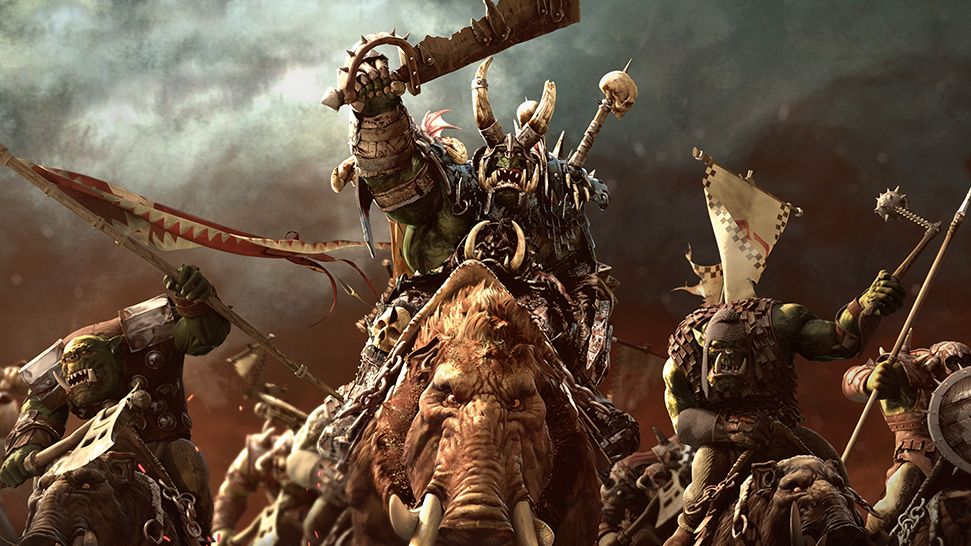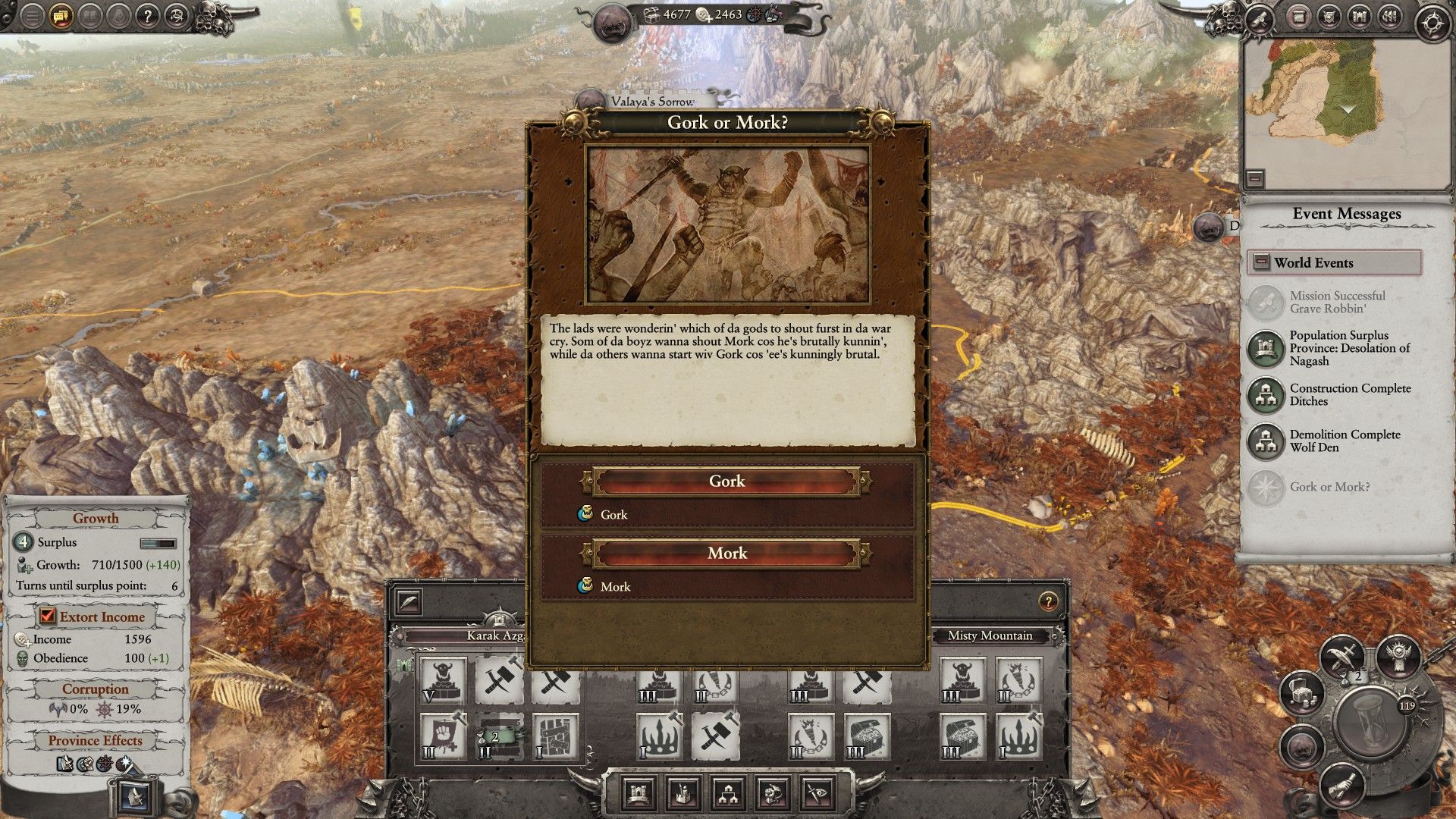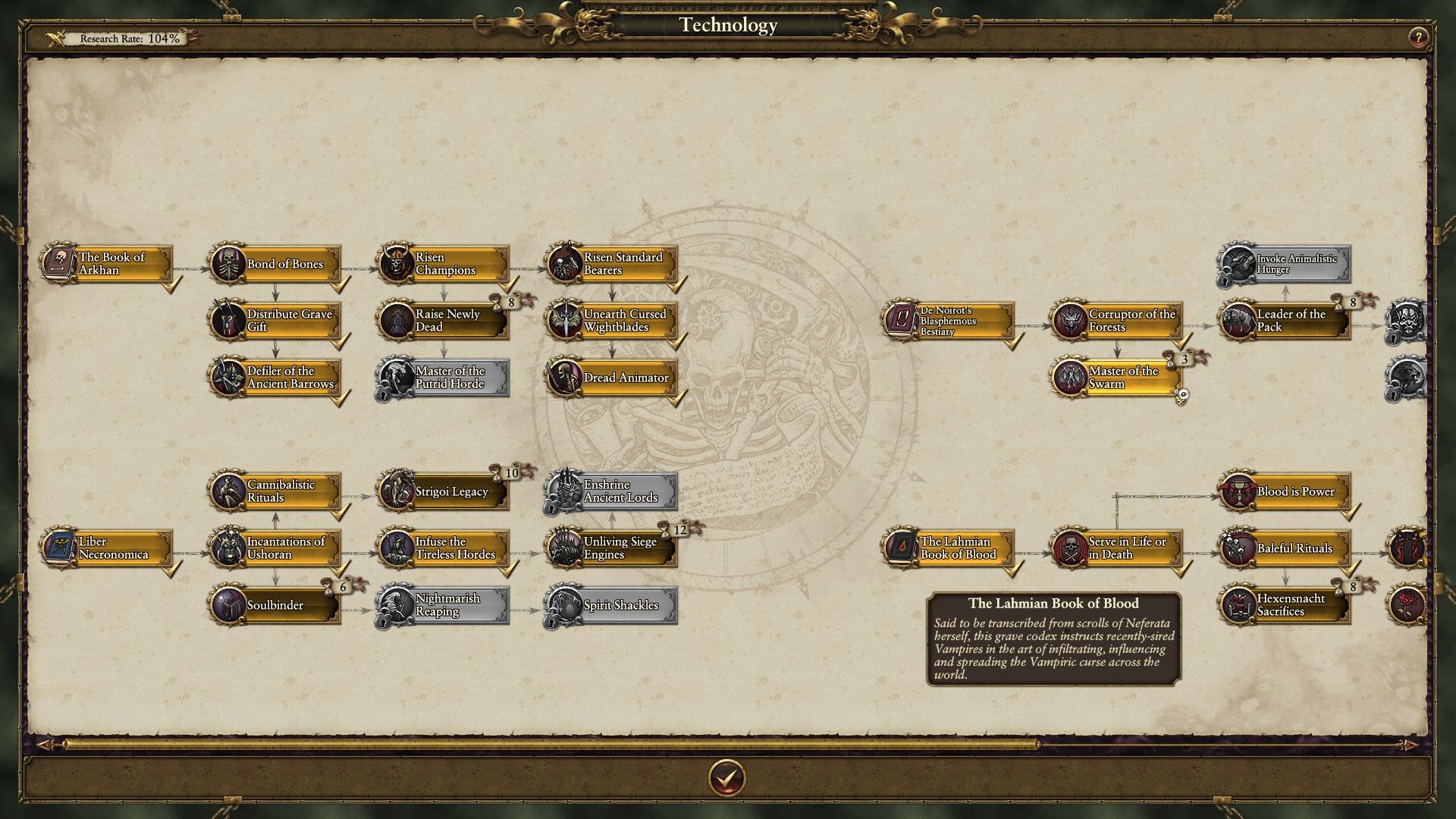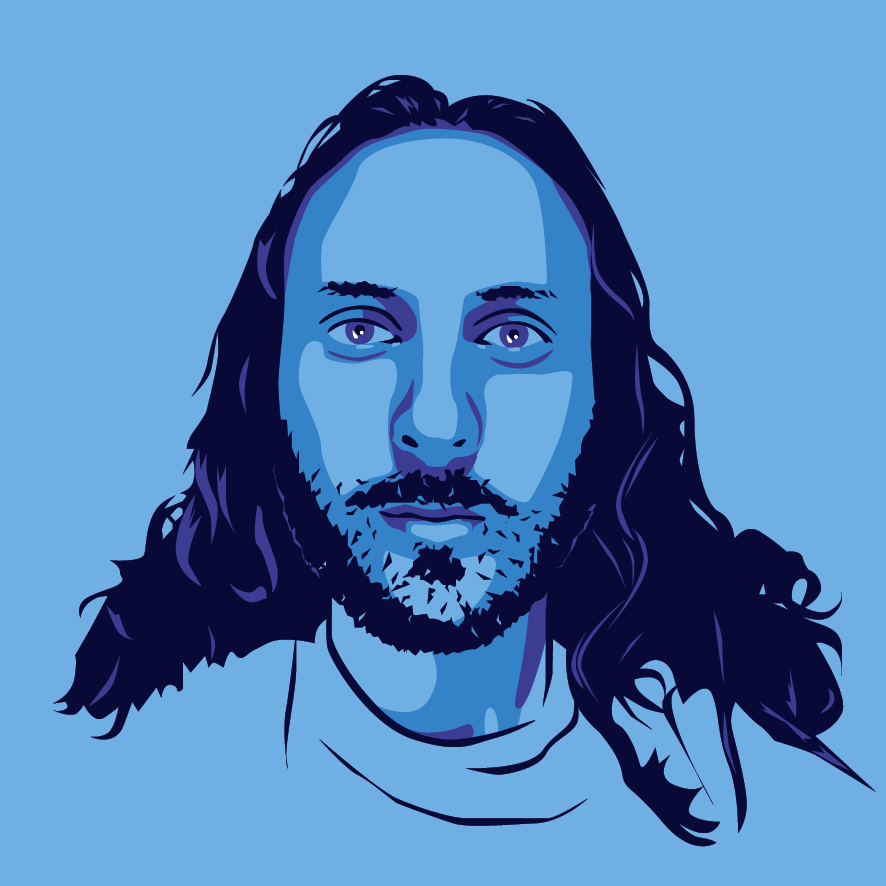Total War: Warhammer world guide, know your kings, nations and gods
Everything you need to know about The Old World.

The in-game Total War: Warhammer encyclopedia may take a few moments to spin up but once it does you'll find it contains useful introductions to the main races and characters of the Warhammer World. The Total War wiki can also help you get to grips with who the legendary lords are and what the playable factions are all about.
However, Warhammer has been around since 1983 and has accumulated a lot of background detail since then, a fair bit of which bleeds into Total War: Warhammer. If you're wondering what country that is on the far side of the map or who all these gods everyone talks about are, this is the guide for you.
The other nations of the Old World
The Empire may be the mightiest human nation of the Old World (though Bretonnia probably has something to say about that), but it's far from the only one. To the north there's Kislev, loosely modeled on Russia and Eastern Europe–the name comes from Czechoslovakia–which is ruled by Tzarina Katarin, a master of ice magic. Her father, Tsar Boris, famously rode a bear into battle. The Kislevites form a bulwark against the Chaos Wastes and the first line of defence against invasion, which means they tend to suffer most at its hands. No wonder they ride bears.
Beyond Kislev are the Norscan tribes, which you'll probably have figured out are rough equivalents of Norway and the rest of Scandinavia. These Viking people live closest to Chaos, and have internalised its influence—many of them are shapeshifters, and most of the Chaos Marauders are drawn from their warriors.
Far to the southwest, nestled safely underneath Bretonnia, are the Tilean City-States and the Estalian Kingdoms. Based on Italy and Spain respectively, these divided nations are too busy with their internal politics to play much of a role in the rest of the Old World and are too far from Chaos to see them as much of a threat.
Bordering them to the south are the Border Princes, the humans you're most likely to encounter first as the Greenskins. These wild borderlands are ruled by exiled nobles brave enough to settle the edges of civilization, but none of their self-governed societies have ever lasted very long since the Greenskins tend to swallow them up whenever there's a Waaagh!

The Gods
You might be familiar with Sigmar, the first Emperor who ascended to godhood and is still worshipped in his homeland, and the Lady of The Lake revered in Bretonnia, but there are a whole pantheon of shared human gods in addition to the big names.
The biggest gaming news, reviews and hardware deals
Keep up to date with the most important stories and the best deals, as picked by the PC Gamer team.
Ranald is a trickster god, a thief who is said to have attained immortality by tricking Shallya, a goddess of healing and mercy, and you'll see his name referenced by several magic items. Ulric is a bloodthirsty god of wolves, winter, and battle who is popular in the north, particularly with the Middenheimers who will be an early thorn in the side of Empire players. In the south Myrmidia is more popular, a civilized goddess of strategy who lends her name to the Border Prince capital of Myrmidens. There's also Morr, god of death, Manaan, god of the sea, Verena, goddess of knowledge, and Taal, god of nature, who is worshipped in both Talabheim and La Maisontaal Abbey.
The Dwarfs prefer to pay homage to their own ancestor gods, chief among them Grungni, the first miner and smith, and Valaya, a goddess of runes and homeland, who both have dwarfholds named after them. There's also Grimnir, patron of the Slayer cult, a warrior who is imitated by shamed Dwarfs who shave their beards and seek death in battle to atone for their sins.
Simplistic as always, the Greenskins pretty much stick with just the two gods, Gork and Mork. Only they really understand the difference between them–one is a god of brutal cunning, the other of cunning brutality–but both can be seen manifesting directly on the battlefield when Orc and Goblin shamans cast their spells.
The Vampire Counts don't go in much for religion, what with having set themselves up as deities and being repelled by holy symbols. Instead, the first of their kind are revered by their descendants and both spells and the magic tomes that serve as their tech tree are riddled with references to them. Nagash, the first Necromancer, provides the Gaze of Nagash and the Nine Books of Nagash, and was also creator of the Crown of Sorcery—his spirit lives on inside it if you were wondering who that voice is whispering to its current bearer Azhag the Slaughterer. Vlad and Isabella von Carstein, whose quotes pop up on loading screens, created the bloodline legendary lord Mannfred is heir too, while Neferata and Ushoran created rival bloodlines called the Lahmians and Strigoi, referenced in their respective grimoires.

The obscure stuff
If you were wondering about the Halflings who are mentioned in an Imperial event called The Moot Petitions, they're the Hobbits of the Old World. While on the one hand they are chubby, pie-loving short people just like they are in Middle-Earth, their homeland of The Moot is smack-dab next to Sylvania, meaning they have to be eternally vigilant against zombies who happen to meander over their border. Many of the Old World's Halflings are expert hunters of the undead.
And the McDeath who gets name-dropped by the Vampire Counts during diplomacy? That's an obscure one. The Tragedy Of McDeath was a scenario pack published for the tabletop game Warhammer Fantasy Battle in 1986, back when it was in its second edition. It was one of few books to describe Albion, a rarely mentioned pseudo-Britain off the coast of the Old World that isn't even labelled on the Total War: Warhammer map. McDeath was, as the name suggests, an analogue of Macbeth who took the throne by murdering King Dunco on the advice of three witches. There's a bit in Macbeth where his enemies approach in disguise by covering themselves with branches–in McDeath, they're actual Treemen.
Finally, if you've seen the triangular symbol that appears during the mysterious event that causes people in your settlements to go missing, dropping growth in that province, that's the mark of the Skaven. This race of rat-people live in the Underway, worship a dark god called The Horned Rat, and plot to devour the world from beneath. With luck we'll see more of them, and some of the other corners of the Warhammer World yet to be explored, in future expansions.
For more on Total War: Warhammer, check out our Total War: Warhammer review and our beginner's guide.

Jody's first computer was a Commodore 64, so he remembers having to use a code wheel to play Pool of Radiance. A former music journalist who interviewed everyone from Giorgio Moroder to Trent Reznor, Jody also co-hosted Australia's first radio show about videogames, Zed Games. He's written for Rock Paper Shotgun, The Big Issue, GamesRadar, Zam, Glixel, Five Out of Ten Magazine, and Playboy.com, whose cheques with the bunny logo made for fun conversations at the bank. Jody's first article for PC Gamer was about the audio of Alien Isolation, published in 2015, and since then he's written about why Silent Hill belongs on PC, why Recettear: An Item Shop's Tale is the best fantasy shopkeeper tycoon game, and how weird Lost Ark can get. Jody edited PC Gamer Indie from 2017 to 2018, and he eventually lived up to his promise to play every Warhammer videogame.

